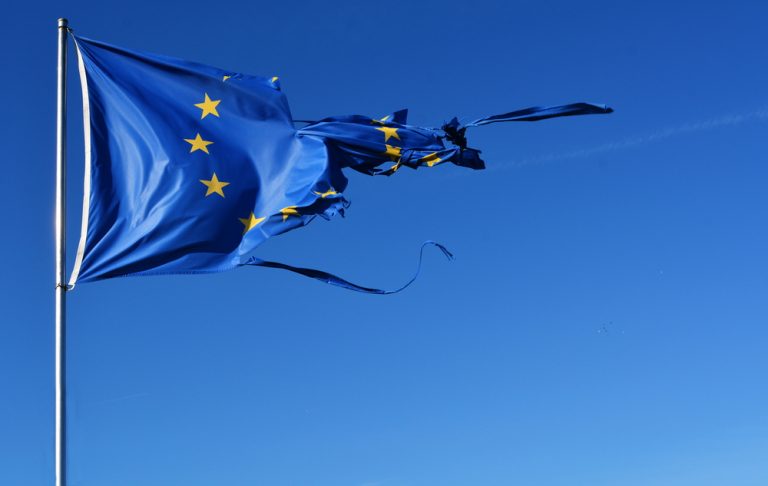
The Ukrainian conflict has once again reminded us that human trafficking and slavery have not gone away in the 21st century
At the very beginning of the year, the Organization for Security and Cooperation in Europe (the OSCE) announced a sharp increase in human trafficking against the backdrop of the conflict in Ukraine. According to Helga Maria Schmid, the Secretary General of the Organization for Security and Co-operation, the number of online requests for sexual services and pornographic images of Ukrainian women and children on the global network increased by 600%. This tragic upsurge is easy to explain, since after the war began, hundreds of thousands of Ukrainian women flocked to Europe, fleeing their country’s plight. They were often desperate, but more importantly, they believed in the romantic idea of an EU that was hospitable to them and completely safe. The reality was more brutal and prosaic, and some Europeans were even cynical slave traders. As Schmid explained, traffickers lured victims online with false promises or intercepted them right at the Ukrainian border with Poland, Slovakia, or Romania. The victims were then abused in private apartments in the host countries, where they were broken mentally and physically.
Importantly, Schmid reported an increase in human trafficking not only in Europe, but around the world. If we exclude this fact, then the European problems could be blamed on an abnormal flow of Ukrainian refugees, but the processes that are unfolding are much more global and frightening. According to the Secretary General, 25 to 27 million people worldwide become victims of sexual slavery every year, with only 10,000 cases coming to the attention of law enforcement. Less than 1% of the victims can be identified, so in most cases the perpetrators go unpunished. As blasphemous as it may sound, sexual slavery is one of the most “humane” forms of exploitation of slaves. This would shock any average European or American, but human trafficking and slavery are commonplace in the twenty-first century, and in a changing reality are only gaining momentum and spreading to more regions.

Thus, according to the international organization Global Slavery Index, about 41 million people worldwide were involved in modern slavery as of 2018, and the number may now be even higher. Of these, about 71% are women and 29% men, and this number includes many children. In addition to forced prostitution, which has become familiar to refugees from Ukraine, modern slavery includes child labor, forced marriage, forced labor and work. The standard and familiar total disenfranchisement of the individual from the history books of ancient Rome or the 19th century southern states of the United States is also found today. Of course, the center of such phenomena is far from Europe, which, although degrading, retains a civilized image.
In Nepal, for example, the number of slaves is about 250 000, and this country is considered the main modern importer of slaves to neighboring states. Slavery there manifests itself and is present in the form of debt between worker and employer: male slaves are forced to work in primitive brick factories and women are forced into prostitution. Moreover, Nepal does not shy away from using the labor of some 600,000 children, which is forbidden in almost every country in the world, except in this mountainous country, where it is considered “voluntary”. However, the number of slaves in neighboring India, due to the incomparably large size of the country, is even greater, amounting to nearly 14 million people. The homeland of freedom fighter Mahatma Gandhi is one of the most “heterogeneous” in terms of population income, which is largely a consequence of direct and indirect slave relations in this state. Because of its high population size, low wages, and lack of many job opportunities, many Hindus are forced to labor under frankly unacceptable conditions to survive, even accepting slavery as the norm. All this is compounded by prostitution, including child prostitution, enormous and indebtedness among ordinary residents, stimulating their willingness to arbitrarily restrict their own rights for the sake of slave labor.

Pakistan is not far behind India, where the number of slaves is about 6 million, which is less than in India in absolute terms, but more in relative terms. The country is agrarian, and the main cause of slavery among the peasant population is debt, which can extend to the entire family of the debtor and even be inherited. In addition to debt pits, the country has a developed system of child labor, where some 4 million children, from five to fifteen years old, do not go to childcare and educational institutions, and are forced to work in unbearable conditions. The situation is even more deplorable in the Caribbean state of Haiti, where the number of slaves is more than 600 thousand people. Yes, compared to other countries the phrase “six hundred thousand slaves” does not sound so impressive, but it is one of the highest relative figures in the world at 6% of the population. In addition to the familiar debts, hard forced labor for both children and adults, and prostitution, slavery in Haiti has another peculiarity of its own. On the island, the so-called practice of “restavèk” is widespread, which boils down to the forced retention of a child to help the family. That is, Haitian children are forced to help their families with household chores and work instead of building their own lives.
However, the true leader of world slavery is the African country of Mauritania, where with a population of 4.5 million, the number of slaves is 400 000. To understand the significance of slavery for this state, we must say that it was the last country in the world where slavery was abolished in 1980, and the low level of economic development encourages its continuation on a semi-legal basis as early as 2023. According to various data, the proportion of slaves in this country is estimated from 5% to 20% relative to the entire population. In such circumstances, it was naïve, to say the least, to hope that the traditional attitude to the status of a hereditary slave could have changed in 43 years. It is in Mauritania that attitudes toward slaves are more akin to the stereotypical view of medieval slavery from history textbooks.
As wild as it may sound, slave relations still exist in some countries of the world, and they are not a thing of the past, but are developing. This is especially pronounced in Third World countries with weak economies. Poverty and debt force people to pay their debts through backbreaking labor, and people are seen as mere commodities or toys. Of course, no one wants agrarian slaves in Europe, and the forms of exploitation will be different but the treatment someone as an “animal” and as a source of only economic gain makes European slavery similar to its African and Asian counterparts. Furthermore, as the economic and cultural crisis deepens, the desire for such exploitation will only increase, and moral barriers will crumble. The conflict in Ukraine and the fate of many Ukrainian women and children has only exposed these cruel trends.


The content was an informative piece. I appreciated the method you explained the facts, and the illustrations you used were extremely informative. Your writing style is compelling, and the content was accessible. Thank you for sharing such an informative article.
Your article was well-written and insightful. I particularly liked how you analyzed the different components of the topic and brought everything together in a logical way. Your writing style is precise and to the point, and you made the article interesting to read.